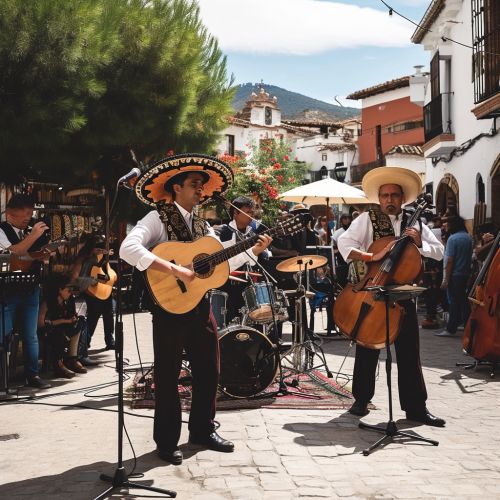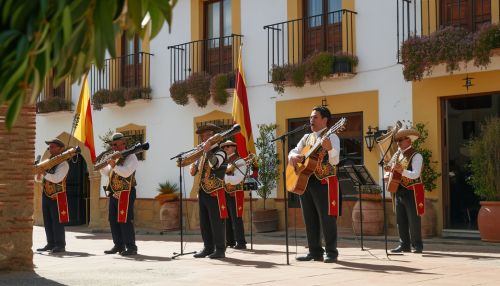Music of Spain
Introduction
The music in Spain has a long and diverse history that has influenced musical styles and trends around the world. The country's geographic location, history of invasions, and diverse regional cultures have all contributed to the development of a rich musical tradition.
Historical Overview


Spain's music history can be traced back to the Roman period, where the influence of Roman musical instruments and theory can still be seen in modern Spanish music. The Visigoths, a Germanic tribe that conquered Spain in the 5th century, also left their mark on the music of the region.
During the Moors' invasion in the 8th century, Arabic music was introduced to Spain. This influence is particularly evident in the music of Andalusia, a region in southern Spain. The period of Moorish rule, which lasted until the 15th century, was a significant period for the development of Spanish music.
The Renaissance period in Spain, which occurred from the 15th to the 17th century, saw a flourishing of music and the arts. This period saw the development of polyphonic music, a style of music where multiple independent melody lines are played simultaneously.
The Baroque period, from the late 16th to the early 18th century, was another important era for Spanish music. During this time, Spanish composers began to develop a distinct style, characterized by emotional intensity and a focus on individual expression.
The 19th and 20th centuries saw the development of several popular music forms, including flamenco, zarzuela, and jota. These styles continue to be popular today and have significantly influenced modern Spanish pop and rock music.
Regional Music
Spain is a country with diverse regional cultures, each with its own unique musical traditions.
Andalusia
Andalusia, a region in southern Spain, is perhaps best known for its flamenco music. Flamenco is a passionate and expressive music form that includes singing (cante), guitar playing (toque), dance (baile), and rhythmic clapping (palmas). Flamenco has been recognized by UNESCO as an Intangible Cultural Heritage of Humanity.
Catalonia
In Catalonia, the sardana is a popular traditional music and dance style. The sardana is performed in a circle dance, and is played by a cobla, a band consisting of 11 players with a variety of instruments including the flabiol (a type of flute), tambori, tenora, tible, and various brass instruments.
Basque Country
The Basque Country has a rich folk music tradition, with influences from both Spanish and French cultures. The txistu, a type of flute, is a common instrument in Basque music. The region is also known for its choral music, with many towns and cities having their own choirs.
Modern Music
In the 20th and 21st centuries, Spain has produced many popular musicians and bands in a variety of genres, from pop and rock to punk and electronic music. Spanish artists have also been successful in the Latin music market, with genres such as reggaeton, Latin pop, and salsa being popular.
Conclusion
The music of Spain is as diverse as its geography and history. From the passionate flamenco of Andalusia to the traditional sardana of Catalonia, Spanish music is a rich tapestry of sounds and styles. Whether it's the classical guitar, the folkloric tunes, or the modern pop and rock, Spanish music continues to be a significant and influential part of the global music scene.
